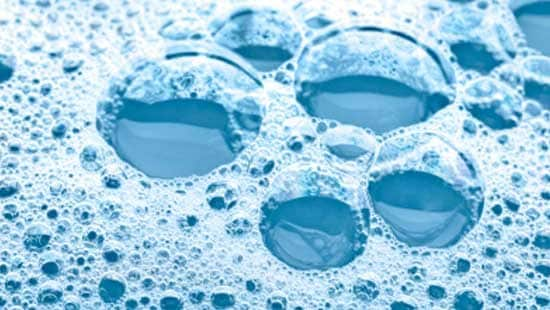Efficient Techniques for Achieving Optimum Foam Control in Chemical Production
Efficient foam control is a critical element of chemical production that can significantly affect production performance and item top quality. By recognizing the systems of foam development and selecting appropriate anti-foaming representatives, manufacturers can take proactive procedures to reduce excessive foam.
Comprehending Foam Formation

Surfactants, or surface-active agents, decrease the surface area tension of the liquid, assisting in bubble stability and promoting foam generation. Additionally, frustration or blending processes can boost bubble formation, typically aggravating foam problems. The attributes of the fluid medium, including viscosity and density, more impact foam behavior; for instance, even more viscous fluids tend to trap air better, bring about boosted foam security.
Understanding these essential facets of foam formation is essential for efficient foam control in chemical production. By identifying the conditions that advertise foam development, suppliers can implement targeted techniques to alleviate its negative results, thereby optimizing production procedures and ensuring consistent item quality. This fundamental knowledge is crucial before exploring certain approaches for managing foam in commercial setups.
Selection of Anti-Foaming Representatives
When picking anti-foaming agents, it is vital to consider the particular characteristics of the chemical procedure and the sort of foam being produced (Foam Control). Various elements influence the effectiveness of an anti-foaming agent, including its chemical structure, temperature stability, and compatibility with various other procedure products
Silicone-based anti-foams are extensively utilized because of their high effectiveness and broad temperature array. They work by lowering surface area tension, permitting the foam bubbles to coalesce and break even more quickly. They might not be suitable for all applications, particularly those including delicate solutions where silicone contamination is a problem.
On the other hand, non-silicone representatives, such as mineral oils or organic substances, can be helpful in certain situations, specifically when silicone residues are unwanted. These agents often tend to be much less effective at greater temperatures however can offer effective foam control in various other conditions.
Furthermore, comprehending the foam's origin-- whether it develops from oygenation, anxiety, or chemical reactions-- overviews the option procedure. Checking under real operating conditions is crucial to make sure that the picked anti-foaming agent fulfills the distinct requirements of the chemical production process effectively.
Process Optimization Techniques
Effective foam control is a vital aspect of enhancing chemical production procedures. To boost performance and minimize manufacturing costs, makers have to implement targeted process optimization techniques. One important strategy involves changing blending configurations and speeds. By fine-tuning these criteria, drivers can minimize disturbance, consequently minimizing foam formation during mixing.
In addition, regulating temperature and pressure within the system can significantly impact foam generation. Reducing the temperature may decrease the volatility of particular parts, bring about lowered foam. Maintaining optimum pressure levels aids in reducing excessive gas launch, which adds to foam stability.
Another effective method is the calculated enhancement of anti-foaming representatives at critical points of the procedure. Mindful timing and dose can make sure that these representatives successfully subdue foam without interfering with various other procedure specifications.
Moreover, incorporating a methodical evaluation of resources properties can help determine naturally foaming materials, permitting preemptive actions. Performing normal audits and process testimonials can reveal inefficiencies and areas for enhancement, enabling continuous optimization of foam control approaches.
Tracking and Control Solution
Surveillance and control systems play a critical role in preserving ideal foam monitoring throughout the chemical production procedure. These systems are necessary for real-time observation and modification of foam degrees, making certain that manufacturing effectiveness is taken full advantage of while minimizing interruptions triggered by too much foam formation.
Advanced sensors and instrumentation are employed to discover foam density and elevation, providing critical information that informs control algorithms. This data-driven technique enables the timely application of antifoaming agents, making certain that foam levels stay within acceptable restrictions. By integrating monitoring systems with procedure control software, makers can implement computerized responses to foam changes, lowering the requirement for hand-operated intervention and enhancing operational uniformity.
In addition, the integration of maker knowing and anticipating analytics right into her latest blog monitoring systems can facilitate aggressive foam monitoring. By evaluating historical foam information and operational parameters, these systems can forecast foam generation patterns and suggest preemptive measures. Normal calibration and upkeep of tracking tools are vital to make sure accuracy and reliability in foam detection.
Ultimately, effective tracking and control systems are important for optimizing foam control, promoting security, and boosting overall performance in chemical manufacturing atmospheres.

Study and Best Practices
Real-world applications of surveillance and control systems highlight the value of foam management in chemical production. A noteworthy study includes a large pharmaceutical supplier that applied an automated foam detection system. By incorporating real-time surveillance with anticipating analytics, the facility lowered foam-related production downtime by 30%. The data-driven method enabled timely treatments, ensuring regular product quality and operational effectiveness.
An additional excellent case originates from a petrochemical firm that adopted a mix of antifoam agents and process optimization strategies. By evaluating foam generation patterns, the company tailored its antifoam dosage, causing a 25% reduction in chemical use and substantial expense savings. This targeted method not only minimized foam disturbance however likewise boosted the total stability of the production process.

Verdict
In verdict, accomplishing optimum foam control in chemical production necessitates a comprehensive technique encompassing the selection of ideal anti-foaming representatives, application of process optimization strategies, and the combination of advanced monitoring systems. Normal audits and training better enhance the effectiveness of these approaches, promoting a society of continual enhancement. By addressing foam development proactively, producers can dramatically boost production performance and product top quality, eventually see adding to more lasting and affordable procedures.
By comprehending the mechanisms of foam development and choosing appropriate anti-foaming representatives, producers can take positive actions to reduce too much foam. The characteristics of the liquid tool, consisting of thickness and density, additional impact foam actions; for example, more viscous fluids often tend to catch air more effectively, leading to boosted foam stability.
Understanding these essential elements of foam formation is image source essential for efficient foam control in chemical production. By examining historic foam information and operational criteria, these systems can anticipate foam generation patterns and suggest preemptive steps. Foam Control. Routine audits of foam control measures guarantee that processes stay optimized, while fostering a culture of positive foam management can lead to lasting enhancements throughout the manufacturing spectrum